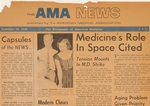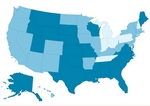business
Emergency departments turn to texting wait times
■ One system creator says practices could use the same technology, though it would be more complicated to implement.
By Pamela Lewis Dolan — Posted Aug. 22, 2011
- WITH THIS STORY:
- » Related content
Publicizing emergency department wait times through websites and electronic billboards has been a growing trend. Now many of those hospitals are adding a texting service that allows patients to receive up-to-date information on their mobile phones while en route to the hospital.
"As people use their mobile devices more and people want transparency, this is just another piece of it," said Doug Spear, administrative director of marketing and communications for Shawnee Mission (Kan.) Medical Center.
Shawnee Mission uses a system called ER Texting. Using a dedicated texting code, 4ER411, patients send a text message with their ZIP code in the body of the text. The system then sends a message back with the ED wait times of each hospital within the specified ZIP code that has contracted with the messaging service. The times do not apply to life-threatening emergencies that require immediate attention.
Before it implemented the texting system, Shawnee Mission talked of using electronic billboards to display wait times, a trend started four years ago by Hospital Corp. of America in Florida. HCA now has rolled out the billboard system, as well as a Web-based wait time clock, to most of its hospitals across the country.
But Shawnee determined that the cost of putting up the electronic billboards was too expensive, Spear said.
HCA also has a texting system at some hospitals, which use shared texting codes unique to each location.
Since Shawnee Mission's texting system went live last March, the hospital has received 200 to 300 text requests each month. Spear said the system provides a marketing opportunity by giving the hospital the chance to broadcast its wait times, which it considers to be pretty good at an average of less than 30 minutes. The system also directs patients with nonurgent needs to the appropriate place for care. The text the patient receives includes information about the hospital's urgent and express care centers for nonemergencies and the average wait times at those locations.
Lawrence (Mass.) General Hospital also views the system as a marketing tool. It receives an average of 100 to 150 texts per month.
"We treat over 70,000 patients a year, yet our average rapid medical evaluation time averages less than 15 minutes," said Nicholas Zaharias, vice president for philanthropy and marketing at the hospital. "Thus, from the marketing end, showing these incredible live times, both by ER Texting, and by an easy click on our new website, this would be a fantastic service to the community."
George Moore, vice president of ER Texting, said the company is dabbling with creating a practice-specific system so patients can find out wait times at their physician's office.
Other technologies send text appointment reminders. But there are challenges to sending wait times that are unique to physician practices, Moore said.
He said physicians running behind schedule often are able to get themselves back on track by making up time throughout the day, which could result in false alerts of the doctor running behind. There also are privacy concerns with electronically linking a physician's schedule, which would include patient information, to a system that would analyze wait times, Moore said.












